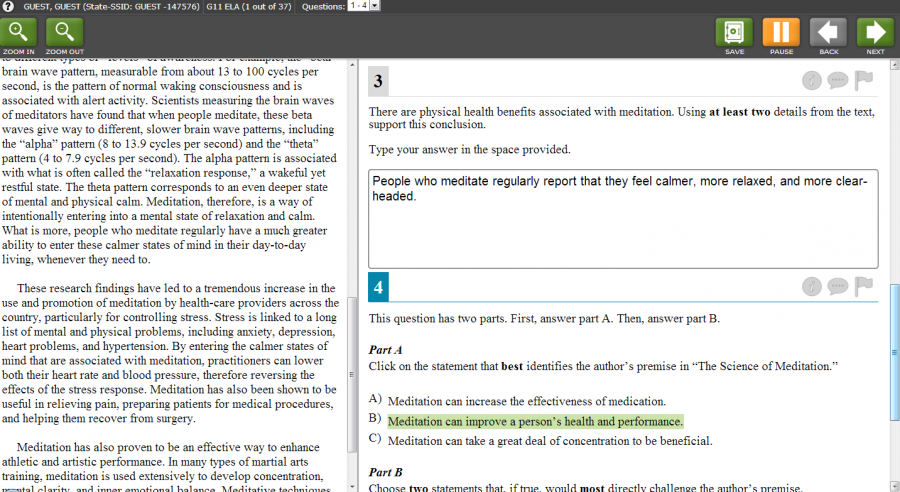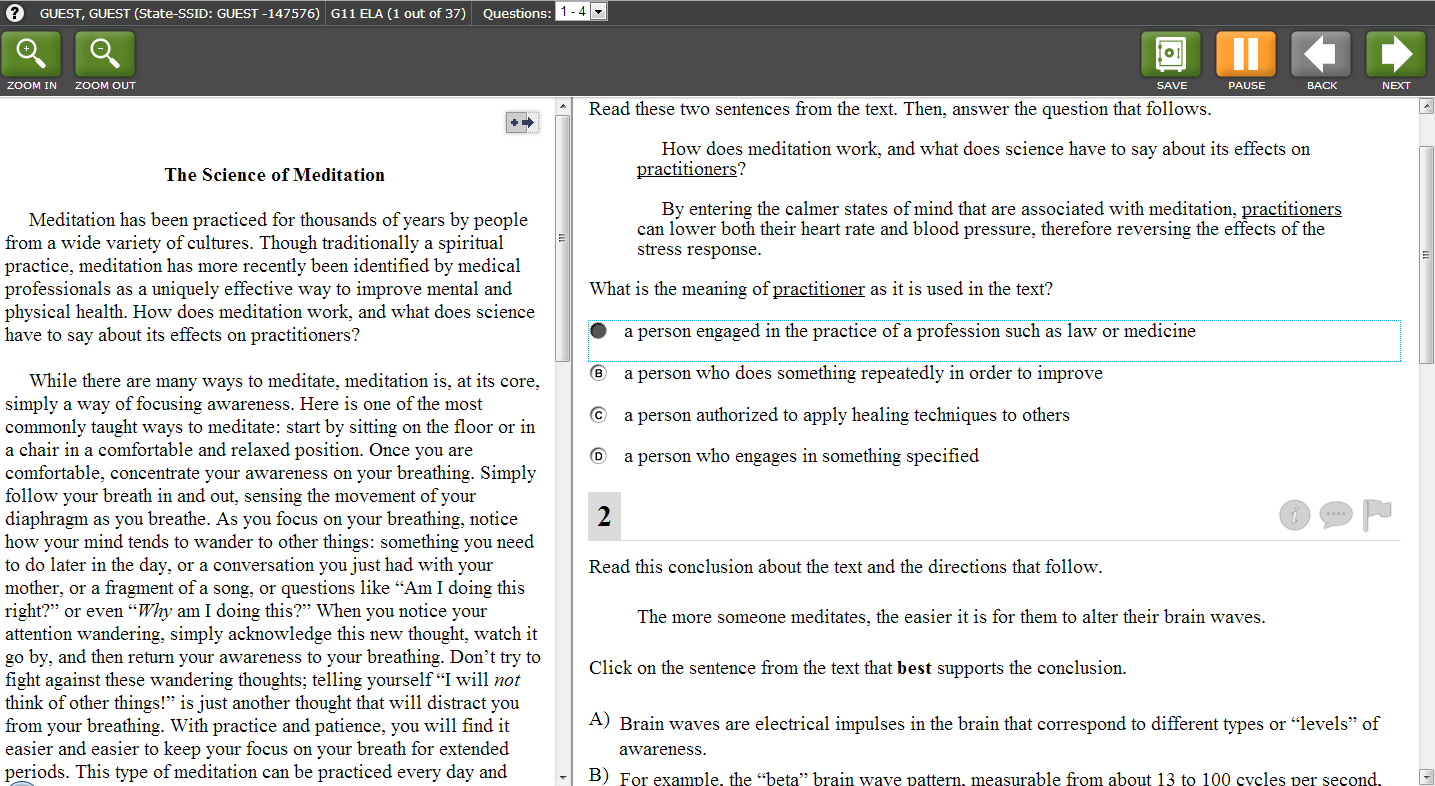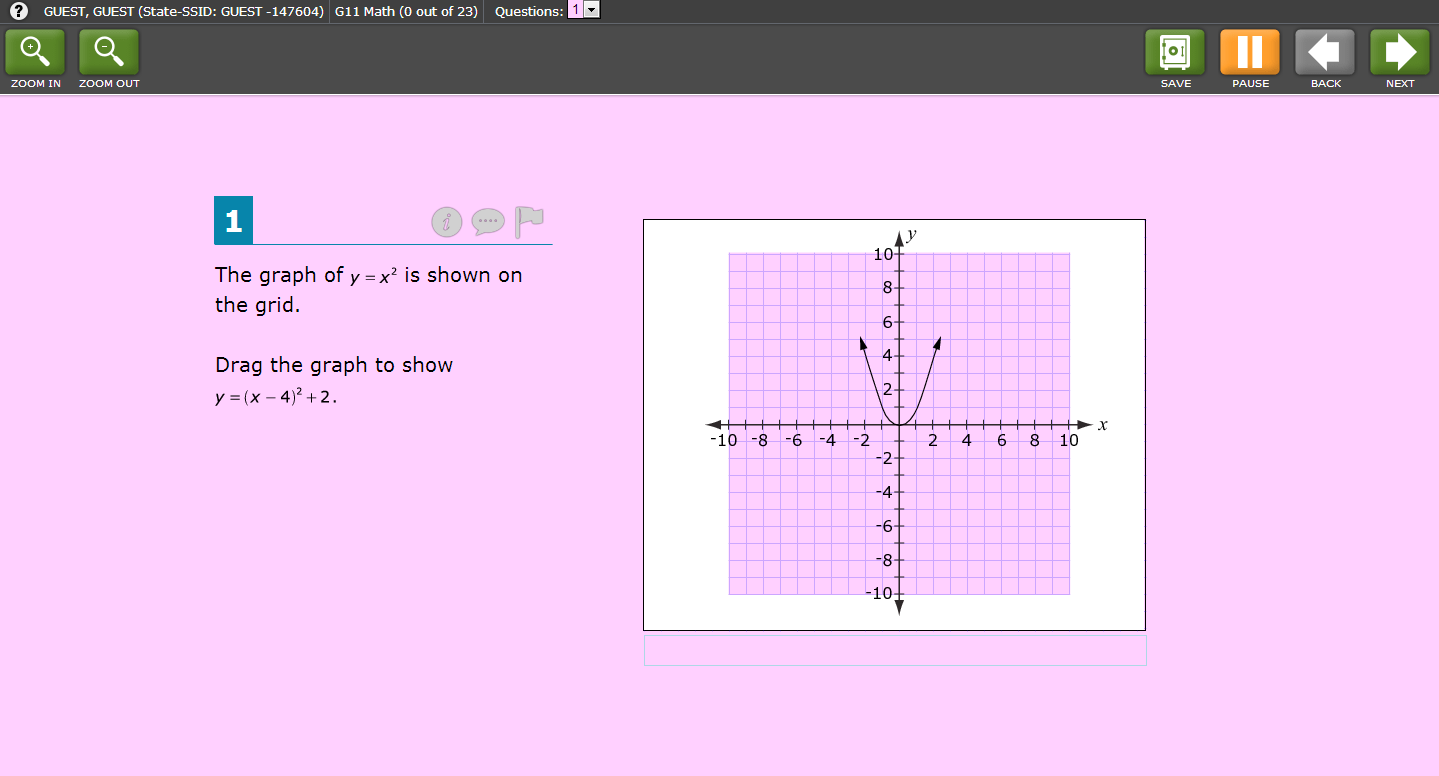The Common Core is Quietly Coming
As we find ourselves slipping into the rapidly changing world of technology, traditional practices like standardized tests become worn down and replaced with a machine to help speed up the process. This year however, the standardized test will become the machine named the Common Core Test.
Curious about the future of standardized test taking, I recently logged on to the testing website where the practice test was hosted, taking the 11th grade math and English tests. The tests felt extremely foreign to me, difficult to traverse at first. Perhaps it was the fact that I had never taken a computerized test, especially not one of this academic caliber.
After logging on to the Smarter Balanced website, I was first greeted with a screen displaying the four different tests for a high school junior. (Smarter Balanced is the organization working to prepare these online tests, being one of two multistate organizations funded by the U.S. Department of Education.)
After selecting a test to take, I was given several options. The Common Core test correctly recognizes that students have personal preferences when working on a computer, and adjusts the test to this principle. The test can be taken in English, as well as in Braille. If you don’t like the color of “black text on white background,” you are given several other color options. Even the text side on the test is adjustable.
Diving into the Common Core practice test is slightly different than the actual test that this year’s juniors will soon take. Unlike the actual Common Core test, the practice test will give you the same set of questions every single time. The real Common Core test uses computer adaptive testing (CAT): inputting an incorrect answer to a question will prompt the test to give you a different question. Every test experience is unique.
“I think it’s all practical,” said Barbara Ferrara, a frequent substitute teacher at Clark. “These new ways of teaching were made because we have all this technology and it’s all convenient. It’s different from the world I grew up in with pencil and paper.”
This new type of testing has arisen one year sooner than planned because California Governor Jerry Brown signed a bill to replace Standardized Testing and Reporting (STAR) testing with the new Common Core Standards tests. Despite being widely known throughout schools, traversing through the unknown and mysterious swamp known as the Common Core test is not nearly as threatening as a CAT exam may appear.
Still, when faced by the 11th grade math test, my normally astute math brain found this particular test to be a foreign creature to wrangle. The first problem I was greeted with involved taking a parabola and fitting it to correspond with a given equation. The following questions ranged from dragging symbols into boxes, placing a certain number of checkpoints into a “Yes/No” chart to drawing a right triangle of a given perimeter. There was not a single multiple-choice problem to be seen.
Similar to kindergarten, where life made sense, I was given a “word bank,” with numbers instead of words. My high school brain had to teach itself that I was allowed to do so, surprisingly. Doing mathematics without a pencil, paper and eraser also felt like an anomaly. The individual work was done inside a calculator that the test provides for you. I came to the conclusion that this was another intention of the Common Core. After high school, for a career, not many people will ask you to do algebra with pencil and paper.
The 11th grade ELA test mirrored some of the experiences of the math test, but was something that a student would expect. Like a normal English test, there are passages and general questions regarding the passage. In a similar fashion to the mathematics test, the questions are often more open-answered. As possible with a computerized test, the entire passage is given to the tester in one column while the questions are given in another. This part of the test, however, is multiple-choice.
In contrast, the majority of these questions go from answers “A” to “C”, rather than CST tests that may go from “A” to “E” sometimes. There are the advantages to being able to read a passage side-by-side with a question, as opposed to a reading a passage and then switching to a question on a cramped, uncomfortable desk. I was often told to type “at least two details from the passage” that supported my answer to a general question.
The reading material in the test appears to be more practical and free in nature than CST tests. The passages I read discussed mostly nonfiction topics such as market consumerism and the science behind meditation, and one fiction passage involving a hypothetical student rivalry. Although these topics can be given on the ELA tests I’ve been used to, they were usually mixed in with other more contemporary works of fiction. On the Common Core test, these topics made up about 90% of the reading material. I found the passages kept my interest more than past topics, due to their real-life applicability.
Taking both the mathematics and ELA tests proved to be a task that was more difficult than an “easy four-hour-long test.” I felt in particular that the standards that are built around the Common Core test appear to be less defined than a CST, invoking the need for more abstract and original ideas. However, the test is not so difficult such that rigorous studying is required. The information is mostly intuitive, as it was designed to be.
One of the main reasons behind the Common Core’s creation was a letter called Ready or Not: Creating a High School Diploma That Works, published by the American Diploma Project in 2004. The letter expressed high-school graduates continue to fall short on the needs of employers and colleges and that high school standards do not “prepare the high-school graduate with adult intelligence needed to succeed.”
The Common Core State Standards Initiative is considered the greatest creation to come out of this accountability period. The initiative looks to completely reorganize and diversify state curriculum. It is sponsored by the National Governors Association and the Council of Chief State School Officers.
Similar to how some middle schools prepared their students for high school, the Common Core standards were created to help high school students prepare for college and career. Haven’t we been taught that this was the point of high school? Our standards are too restricted in terms of requirements and are making us all mindlessly turn out the same after graduation.
I have never been a large fan of standardized test-taking. Taking the California High School Exit Exam test as a sophomore was really easy to every student taking it. Similarly, the required California Standards Tests (CST) were not necessarily difficult, although Clark staff seemed to pressure us into studying hard and getting the best scores we could. The opposite end of the spectrum includes the tests that are so difficult and unusual that they seem to get on a person’s nerves and your cranium feels like pudding at the conclusion, such an AP test or a SAT Subject test.
The Common Core falls right into the middle of this category, not too easy, not too hard. I didn’t want to admit it, but I was glad to have gotten a sneak peek of what future students will face.










